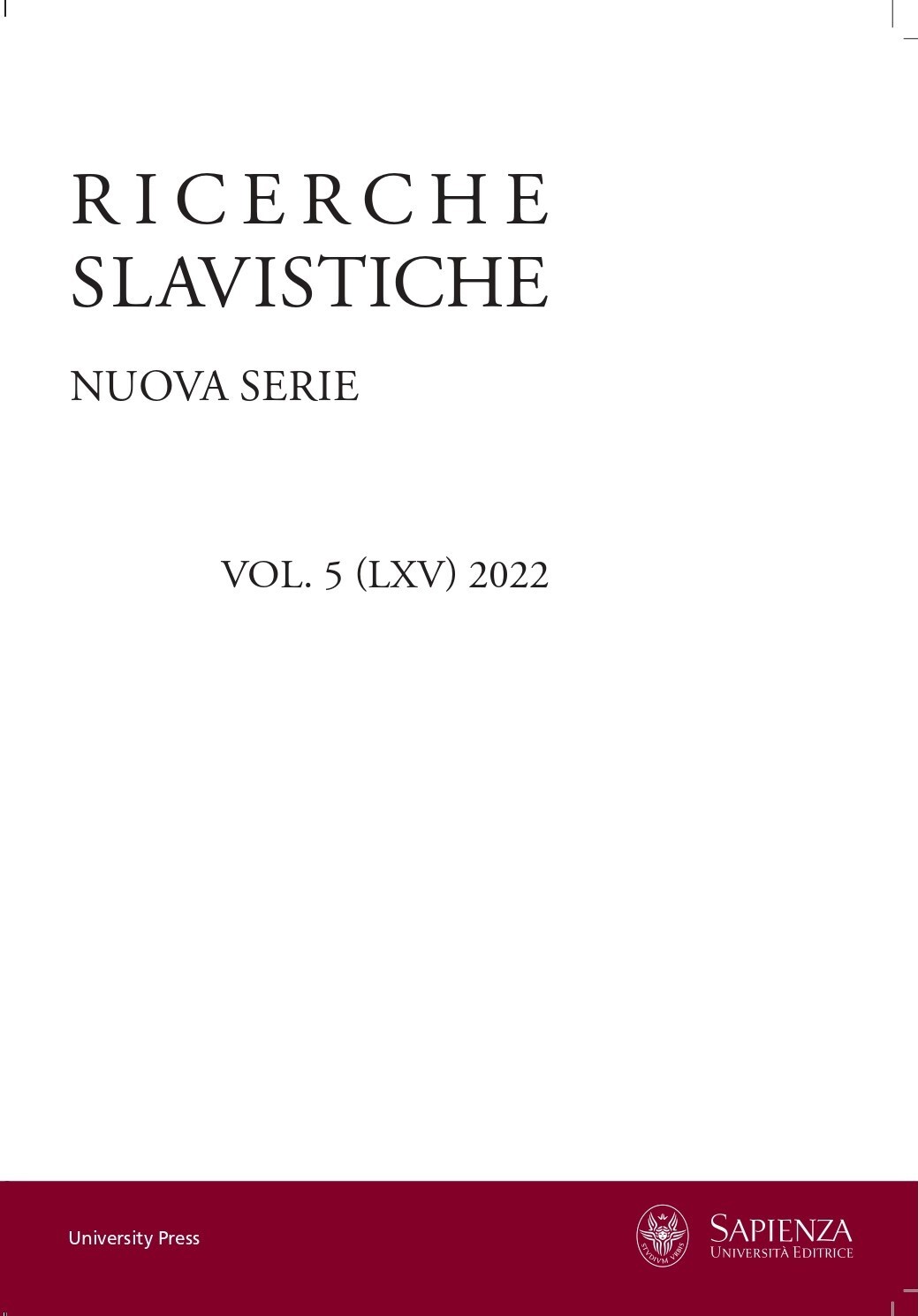
Luigi Marinelli, Noster hic est Dantes. Su Dante e il dantismo in Polonia. Lithos
Review of: Luigi Marinelli, Noster hic est Dantes. Su Dante e il dantismo in Polonia. Lithos, Roma 2022
More...We kindly inform you that, as long as the subject affiliation of our 300.000+ articles is in progress, you might get unsufficient or no results on your third level or second level search. In this case, please broaden your search criteria.

Review of: Luigi Marinelli, Noster hic est Dantes. Su Dante e il dantismo in Polonia. Lithos, Roma 2022
More...
Italian literature in the 1920s, 1930s, 1940s raises significant questions related to the human body’s role and place – the microbody – against the background of society’s macrobody. The collision of the small man with the big world can be traced in the work of many authors in the decades just before, during and after World War II. The question of the body’s transformation from passive to active, from being contemplative to standing as an active and responsible subject for what was done, can also be considered. In the works of Italo Svevo, Luigi Pirandello, Corrado Alvaro, Carlo Levi, Primo Levi the relationships between the microbody and the macrobody can be discovered and examined through the analysis of non-literary factors - social, political, economic. The present interdisciplinary study aims at exploring the concept body and its transformations in Italian literature in the specified decades of the twentieth century.
More...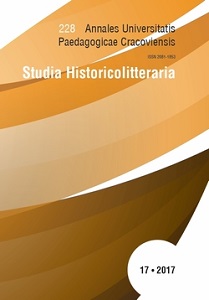
The article treats about the relationship between one of Carlo Goldoni’s first plays – Servant of Two Masters – and the tradition of commedia dell’arte. The key to the search for common points was the character of a servant Truffaldino whose constant hunger links him to his predecessor zanni. Thanks to a never-before carried-out analysis of Brighella’s zibaldoni and zanni and Goldoni’s comedy in the context of vocabulary, metaphors and lazzi referring to food and hunger, it can be observed how much the contemporary plays of the Venetian writer are related to the old theatrical tradition.
More...
The present article contains an analysis of Giacomo Casanova’s literary work, in which Poland appears. The Venetian seducer had stayed in Poland for several months before the country disappeared due to partitions. He described his experience in memoirs entitled Histoire de ma vie, as well as in libretto Il Duello which chronicles an incident involving duke Branicki and which forced him to first duel the duke and later to leave the country. Connections Casanova made in Poland stimulated him to write Istoria delle turbolenze della Polonia, a historical treatise about the country. However it was never finished which resulted in bitter dispute. Thanks to the soul of inquisitive observer we are given remarks concerning not only the author’s character but also those on Poland of that time. Said information is most often reflected by historical evidence and give us a perfect picture of Polish society of that period.
More...
The article presents the 18th century texts regarding an event that occurred in Cesena in 1731: Parere sopra la cagione della morte della Signora Contessa Cornelia Zangheri ne’ Bandi cesenate esposto in una lettera al signor co. Ottolino Ottolini da Giuseppe Bianchini canonico di Verona oraz Relazione del funestissimo evento della Signora Cornelia Zangheri ne’ Bandi occorso li 20 Marzo 1731 in Cesena (anonymous manuscript whose author is most probably Scipone Maffei). Those two texts were analyzed from the non-fiction point of view in order to answer the question whether they are examples of said genre, even if ante litteram.
More...
Italian voyages of the 19th and 20th centuries have already been described many times. That is why this paper has been devoted to those accounts which so far have not been particularly popular with literary historians, but are still worth mentioning: Z Wenecyi do Neapolu. Wrażenia z podróży by Władysław Bełza and Za Apeninami, Na lagunach, Obrazy i obrazki Wenecyi by Stanisław Bełza. The paper consists of two parts: the first one presents Venice as seen by the above mentioned authors, while the second one, entitled Z Polski do ziemi włoskiej, z ziemi włoskiej do Polski follows the Polish traces on foreign land. Voyages of the Bełza brothers, just like romantic voyages had two routes: the first one led through the European cultural heritage, while the other one followed the track of national memorabilia.
More...
The article aims at showing the presence of Curzio Malaparte’s prose in Poland, mainly by characterizing subsequent Polish translations of individual works of the writer, as well as reactions to them exhibited by critics and interest of the readers. Out of necessity, the article is only an outline, however, it can be a base for further analysis of reception of Malaparte’s writing in Poland. From the information gathered on publications of the Italian authors an interesting model emerges. It links the changes in popularity of Malaparte in Poland with historic events and political situation.
More...
The text discusses the most important problems raised in Jadwiga Miszalska’s book The Song of the Tragic Playthings Teaches us Virtue: Translations from Italian as a Source for Polish Serious Drama till the end of the 18th Century (Kraków, 2013). The author drew attention to the place that the translation from Italian takes in the Polish culture and literature and noted the fact, that choice of texts for translation, the way of reading, the changes to which the translators of the Italian dramaturgy decided have become a source of knowledge about the history of literature, literary trends and reading (and scenic) expectations of the time.
More...
Terremoto is a literary documentary devoted to earthquakes that have struck Italy in recent years. The author mixes accounts from travels to places affected by the disaster, interviews with experts on various aspects of the phenomenon and thought on cultural methods of taming the constant threat. One of the main characters of the text is Luca Cari, a spokesperson for Italian fire department and civil-protection services who accompanies the author in his travels Mikołajewski’s book is one of the very few Polish publications that do not replicate the stereotypical view on the Italians. It is also an important base for a discussion on the relationship of Poles towards the Mediterranean culture.
More...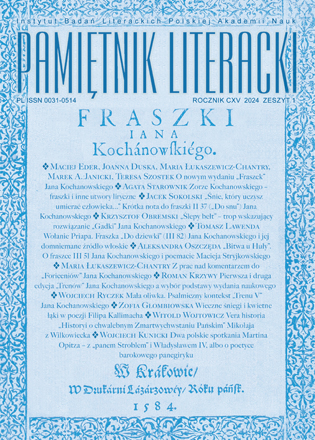
The paper refers to two contradictory images of Poland contained in elegies by Filippo Buonaccorsi Callimachus. Quite concise, stereotypical descriptions of Poland as a northern country covered withsnow and ice serve to locate the place of action and the origin of Fannia—the heroine and the ad-dressee of the collection as well as of a few other familiar characters. Furthermore, with antitheses (e.g.barbarian country versus beauty, barbarian country versus literary creation), the descriptions allowto amplify their admiration. Further descriptions are considered more vital, namely that of Polish win-ter as one of the seasons, and those of warm spring and summer. Callimachus was the first, long beforeJan Kochanowski, who offered a vision of Poland based on pastoral locus amoenus and Horatian springodes (I 4 and IV 7) and patterned on ancient praises of countryside, known from the Roman elegy andHorace’s 2nd epode. He was also the first to use the motive of flower chaplet that a girl gives to a boy asa sign of love.
More...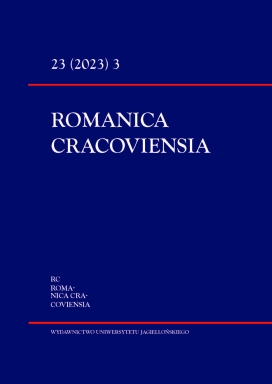
In this article I analyse and interpret three passages from Dante’s Paradise containing more or less explicit allusions to the myth of the Argonauts, which Dante knew from Ovid’s Metamorphoses. All three are intertextual and occur at key points in the Canticle of Light, performing a meta-poetic func- tion. They pertain to the essence and objectives of Dante’s poetry and its pioneering character, both in terms of subject-matter and means of expression, particularly for the depiction of the visions of Para- dise. Dante makes use of the metaphor of sailing the seas, which had been a topos of literary creativity since ancient times, and compares his own poetic exploit (The Divine Comedy) with the quest for the Golden Fleece conducted by Jason. Yet at the same time Dante distances his own work from the feat accomplished by the captain of the Argonauts.
More...
The pandemic is symbolic of an apparent absolute evil that afflicts human materialism in its essence, as seen in the fundamental masterpiece of Italian literature, Dante’s poem. In it, pestilence becomes a symbol of fraud and is associated with the perverse, falsifying and destructive use of intellect for the will of oppressing the others and an uncontrollable greed of wealth and power. In the Divine Comedy appears the symbolic vision of a terrible epidemic, affecting the deep infernal areas and associating itself with the wrong arrogant use of alchemical science (Inf. XXIX–XXX). We are in the presence of a real ideological and technical-scientific perversion which, instead of offering help to our world, only causes continuous diseases for our body and spirit.
More...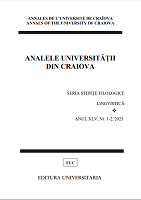
The paper analyses the use of Romanian borrowings in contemporary Italian prose, as a form of social change due to immigration. Three recent novels shall be considered: two are written by Italian authors – Daniele Semeraro’s Ana Macarena (Castelvecchi Editore, 2018) and Armando Santarelli’s Storia di Mirela (Rubbettino, 2020), and one by an Italianspeaking Romanian immigrant, Andreea Simionel’s Male a est (Italo Svevo Edizioni, 2022), outlined in the 2023 edition of the Strega Awards. The investigation follows the Romanian gastronomic vocabulary, mainly used by the three authors in their novels.
More...
This article presents and discusses the translation of the correlative pairs chi… chi of Alessandro Manzoni’s I promessi sposi, in the Romanian version Logodnicii by Alexandru Balaci. We notice that the translator Alexandru Balaci (1916-2002), a refined specialist of Italian language and culture, uses a wide range of translation versions, sometimes even deciding not to translate the correlative pair chi… chi, but to rephrase the entire utterance.
More...
The article deals with four facetiae included in the anonymous collection Facecye polskie [Polish Facetiae], modelled – as it is believed – on the novel- las of Giovanni Boccaccio’s Decameron (I, 8; VI, 3; VI, 4; V, 9). Careful comparative analysis allows us to discover the translating strategies of the Polish author. It turns out that the changes made by the author of the Facecye polskie in the three tales (nos. 110, 111, 135) are superficial, while the modifications to facetia no. 138, regarded as a translation of the ninth novella of Day Six, result, in fact, in a completely different text, in which the enigmatic motto of the protagonist is replaced by a replica devoid of subtlety. The translation strategy, which differs from the earlier ones, may suggest that the source of facetia no. 138 is not the novella about Guido Cavalcanti, but perhaps a completely different text. A thorough comparative study shows that facetia no. 138 is closer to anecdote II, 60 found in the Rerum memorandarum libri by Petrarch, as well as to its sixteenth-century German translations than to novella VI, 9. Modifications of the Latin orig- inal, which we note in the German translations and the Polish version of the tale, do not, however, allow one to unequivocally state that the author of Facecye polskie may have been inspired by German-language editions of Petrarch’s anecdote, but they do not rule it out.
More...
The purpose of the article is to discuss the biography of Dante Alighieri, written by Alessandro Barbero and recently published in Polish translation. The study in question is presented with regard to other recent biographies of Dante Alighieri. The perspective adopted in the text is that of a historian, not a philologist or literary scholar.
More...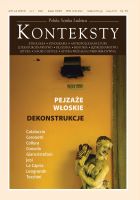
La Capria, novelist of the sea. Not the violent ocean, as in the case of Melville, Hemingway or Conrad, but the joyful sea of summer holidays, with its enchanting texture of waves and hues of the depths, joyful and carefree. The novel by La Capria is a song of praise, a tribute to Mediterranean radiance, liberty, and infatuation. But it is also a sad story about the vanishing old world, the change that must come in the manner of a thundercloud after a hot summer day. It is impossible to replay the moment of happiness or to recover old love, but on the majority of La Capria’s pages the sea simply sparkles with fish, and people laugh, swim, dive, and live in spite of everything. They remain attached to water, which comforts them.
More...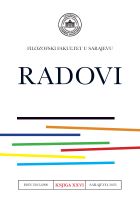
This paper deals with the evolution of the Italian standard language on the corpus of the 20th century literary work - Giorgio Bassani’s novel Il giardino dei Finzi-Contini (The Garden of the Finzi-Contini) and contemporary Italian press. Analyzing individual linguistic elements at the morphological and semantic level, the way in which the Italian standard language evolves in literature and in the language of the press is explained. Special attention is paid to the differences between the two registers and also to their similarities.
More...
The article examines the Estonian translations and reception of the Italian decadent writer, poet, and playwright Gabriele D’Annunzio during the period 1906–1915, encompassing a total of 13 published translations. These include a series of short stories featured in Estonian newspapers and magazines, along with two separate books: the novel Süütu (“The Innocent”, 1913) and a collection of D’Annunzio’s short stories titled Mäss (“Revolt”, 1915). The latter initiatives were associated with the modernist movement Young Estonia (Noor-Eesti), with Young Estonian poet and language reformer Villem Grünthal Ridala emerging as the most prolific Estonian translator of D’Annunzio. An analysis of the newspaper and book translations reveals a consistent pattern of omitting or significantly manipulating the overtly explicit or morbid erotic passages found in the original works, for instance when D’Annunzio evokes forbidden sexual relations (such as incest) or associates feminine fertility and reproductive function with disease and bodily decomposition. Reviews of the translations also conveyed a somewhat negative attitude towards the content of D’Annunzio’s works, and even the Young Estonians expressed admiration for his style rather than the decadent motifs and poetics. Ridala’s translations set themselves apart from other newspaper translations by striving to closely reproduce D’Annunzio’s style, boldly leveraging it to advance Young Estonia’s project of renewing the Estonian literary language. This is especially pronounced in the translation of “The Innocent”, which not only outraged critics hostile to Young Estonia’s agenda, but also raised doubts among the movement’s own members. The analysis of the Estonian translations and reception of D’Annunzio at the beginning of the 20th century thus underscores a series of ambivalences in Young Estonia’s attitudes towards the motifs and poetics of European decadence, on the one hand, and the renewal of the Estonian language and literary style through translation, on the other
More...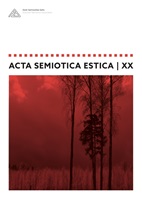
Antud essee keskendub Emilia tegelaskuju abjektiivsele arengule Pier Paolo Pasolini jutustuses “Teoreem”. Essee ei püüa ammendavalt analüüsida tegelaskuju kõiki psühhoanalüütilisi, religioosseid ega kirjanduslikke tahke, vaid seab eesmärgiks anda ülevaade tema loo käigus vältavast kujunemisest Julia Kristeva abjekti mõiste kaudu. Abjekt ei ole osa subjekti minast – ta pole ka viimase vastand, objekt. Abjektil pole objekti ja millestki kinni haarata pole ka abjektsiooni kogeval inimesel – see tõmbab ta kaasa sfääri, kus binaarsuste habras konstruktsioon on kokku kukkunud ja tähendus puudub. Abjekt on väljatõugatu, mis asub ikka veel siin – vaatamata kõigile oma vastuolulistele ja siia maailma mitte kuuluvatele tunnustele. Mina kaotab jalge alt pinnase, ta tõugatakse abjektsiooni teel endast ja oma maailmast välja ning tühimiku täiteks saab teine. Too teine pole aga subjekti vastand ega äratõuke tulemus, vaid subjektile eelnenu, mis seeläbi on subjekti olemise tingimus – õudu, vastikust, iha äratab miski, mis korraga on ja ei ole osa minast. Abjektsiooni kaudu saab mina tõeliselt iseendaks, kuid millekski muuks, mis ta oli enne. Abjekt asub piiri peal – seda ei saa eitada ning seega ei saa seda kogeda passiivselt, kuna abjekt ärkab ellu äratõukamise, aktiivse reaktsiooni momendil. Ometi abjekti piir ei eralda, pigemini loob see vahepealsuse ala, kus tähendused tuleb alles luua ja miski ei ole selgepiiriline. Abjektis on midagi anarhistlikku – see rikub korda, murrab truudust, ei tunnista tähistaja ja tähistatava vahelist loogilist suhet, kuna tähistaja muudkui vahetub, tähistatava kohta pole aga võimalik midagi kindlat öelda. Pigem võib vaid välistada kõik, mida ei saa tähistada, kuivõrd välistamine on abjekti olemasolu eelduseks. Kuigi abjektsiooni pole otseselt võimalik kuhugi paigutada, kasutab Kristeva sellele koha andmiseks sõna chora (anum), märkimaks tungide valitsetavat ruumi. Tungid loovad mitte-mina ja selle objekti, andes mõlemale seeläbi ka olemasolu. See, mis ma olen, ihaldab teiseks saamist, enese väljatõukamise kaudu uuesti sündimist, mitte-minaks saamist. Tungi teispoolsusesse, jälestuse ja hämaruse puudutust, tähendusetut, aga seeläbi kütkestavat ülevust (Kristeva 2006, McAfee 2004).
More...